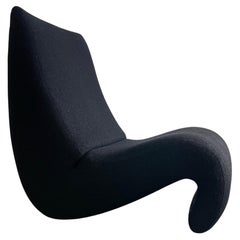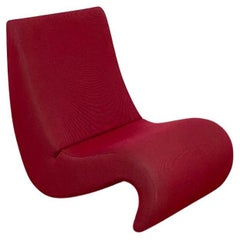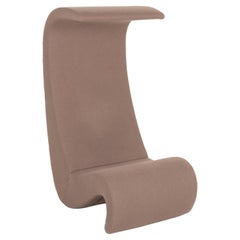Vitra Amoebe
1990s Swiss Mid-Century Modern Lounge Chairs
Fabric
Late 20th Century Swiss Futurist Lounge Chairs
Fabric
Recent Sales
21st Century and Contemporary German Modern Chairs
Fabric
2010s Italian Mid-Century Modern Lounge Chairs
Upholstery
Vintage 1970s German Lounge Chairs
Fabric
Vintage 1970s Swiss Space Age Lounge Chairs
Upholstery
Vintage 1970s German Lounge Chairs
Fabric
Vintage 1970s Mid-Century Modern Lounge Chairs
Fabric, Foam
21st Century and Contemporary German Modern Chairs
Fabric
People Also Browsed
2010s Oceanic Modern Chandeliers and Pendants
Aluminum
21st Century and Contemporary American Mid-Century Modern Benches
Cord, Hardwood
21st Century and Contemporary American Scandinavian Modern Wall Lights a...
Brass
21st Century and Contemporary American Mid-Century Modern Flush Mount
Steel, Brass, Gold, Silver
20th Century Italian Mid-Century Modern Coffee and Cocktail Tables
Plastic
2010s European Mid-Century Modern Wall Lights and Sconces
Brass
2010s Italian Modern Wall Lights and Sconces
Brass
Vintage 1970s Italian Mid-Century Modern Beds and Bed Frames
Leather, Wood
2010s Turkish Modern Floor Mirrors and Full-Length Mirrors
Metal, Brass
21st Century and Contemporary American Scandinavian Modern Wall Lights a...
Brass, Nickel
Vintage 1970s Italian Mid-Century Modern Beds and Bed Frames
Cotton, Linen, Velvet
21st Century and Contemporary Portuguese Modern Contemporary Art
Ceramic, Paint
2010s Indonesian Mid-Century Modern Side Tables
Teak
Vintage 1970s Italian Post-Modern Beds and Bed Frames
Oak
Vintage 1970s French Art Deco Beds and Bed Frames
Aluminum
Vintage 1970s Italian Post-Modern Floor Lamps
Metal, Chrome
Verner Panton for sale on 1stDibs
Verner Panton introduced the word “groovy” — or at least its Danish equivalent — into the Scandinavian modern design lexicon. He developed fantastical, futuristic forms and embraced bright colors and new materials such as plastic, fabric-covered polyurethane foam and steel-wire framing for the creation of his chairs, sofas, floor lamps and other furnishings. And Panton’s ebullient Pop art sensibility made him an international design star of the 1960s and ’70s. This radical departure from classic Danish modernism, however, actually stemmed from his training under the greats of that design style.
Born on the largely rural Danish island of Funen, Panton studied architecture and engineering at Copenhagen’s Royal Danish Academy of Fine Arts, where the lighting designer Poul Henningsen was one of his teachers. After graduating, in 1951, Panton worked in the architectural office of Arne Jacobsen, and he became a close friend of Hans Wegner's.
Henningsen taught a scientific approach to design; Jacobsen was forever researching new materials; and Wegner, the leader in modern furniture design using traditional woodworking and joinery, encouraged experimental form.
Panton opened his own design office in 1955, issuing tubular steel chairs with woven seating. His iconoclastic aesthetic was announced with his 1958 Cone chair, modified a year later as the Heart Cone chair. Made of upholstered sheet metal and with a conical base in place of legs, the design shocked visitors to a furniture trade show in Copenhagen.
Panton went on to successive bravura technical feats. His curving, stackable Panton chair, his most popular design, was the first chair to be made from a single piece of molded plastic.
Panton had been experimenting with ideas for chairs made of a single material since the late 1950s. He debuted his plastic seat for the public in the design magazine Mobilia in 1967 and then at the 1968 Cologne Furniture Fair. The designer’s S-Chair models 275 and 276, manufactured during the mid-1960s by August Sommer and distributed by the bentwood specialists at Gebrüder Thonet, were the first legless chairs crafted from a single piece of plywood.
Panton would spend the latter half of the 1960s and early ’70s developing all-encompassing room environments composed of sinuous and fluid-formed modular seating made of foam and metal wire. He also created a series of remarkable lighting designs, most notably his Fun chandeliers — introduced in 1964 and composed of scores of shimmering capiz-shell disks — and the Space Age VP Globe pendant light of 1969.
Panton’s designs are made to stand out and put an eye-catching exclamation point on even the most modern decor.
Find vintage Verner Panton chairs, magazine racks, rugs, table lamps and other furniture on 1stDibs.
Finding the Right Seating for You
With entire areas of our homes reserved for “sitting rooms,” the value of quality antique and vintage seating cannot be overstated.
Fortunately, the design of side chairs, armchairs and other lounge furniture — since what were, quite literally, the early perches of our ancestors — has evolved considerably.
Among the earliest standard seating furniture were stools. Egyptian stools, for example, designed for one person with no seat back, were x-shaped and typically folded to be tucked away. These rudimentary chairs informed the design of Greek and Roman stools, all of which were a long way from Sori Yanagi's Butterfly stool or Alvar Aalto's Stool 60. In the 18th century and earlier, seats with backs and armrests were largely reserved for high nobility.
The seating of today is more inclusive but the style and placement of chairs can still make a statement. Antique desk chairs and armchairs designed in the style of Louis XV, which eventually included painted furniture and were often made of rare woods, feature prominently curved legs as well as Chinese themes and varied ornaments. Much like the thrones of fairy tales and the regency, elegant lounges crafted in the Louis XV style convey wealth and prestige. In the kitchen, the dining chair placed at the head of the table is typically reserved for the head of the household or a revered guest.
Of course, with luxurious vintage or antique furnishings, every chair can seem like the best seat in the house. Whether your preference is stretching out on a plush sofa, such as the Serpentine, designed by Vladimir Kagan, or cozying up in a vintage wingback chair, there is likely to be a comfy classic or contemporary gem for you on 1stDibs.
With respect to the latest obsessions in design, cane seating has been cropping up everywhere, from sleek armchairs to lounge chairs, while bouclé fabric, a staple of modern furniture design, can be seen in mid-century modern, Scandinavian modern and Hollywood Regency furniture styles.
Admirers of the sophisticated craftsmanship and dark woods frequently associated with mid-century modern seating can find timeless furnishings in our expansive collection of lounge chairs, dining chairs and other items — whether they’re vintage editions or alluring official reproductions of iconic designs from the likes of Hans Wegner or from Charles and Ray Eames. Shop our inventory of Egg chairs, designed in 1958 by Arne Jacobsen, the Florence Knoll lounge chair and more.
No matter your style, the collection of unique chairs, sofas and other seating on 1stDibs is surely worthy of a standing ovation.



